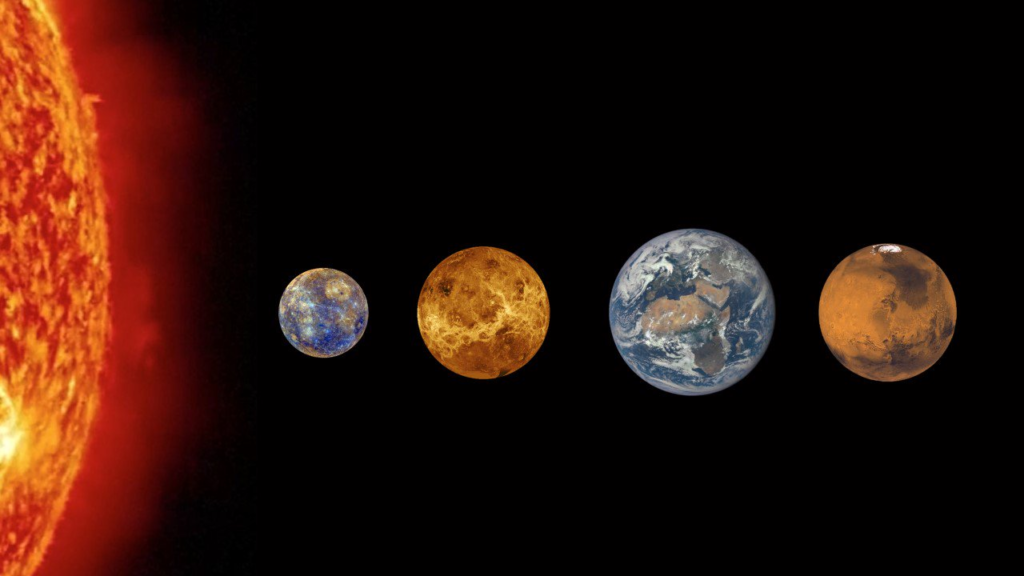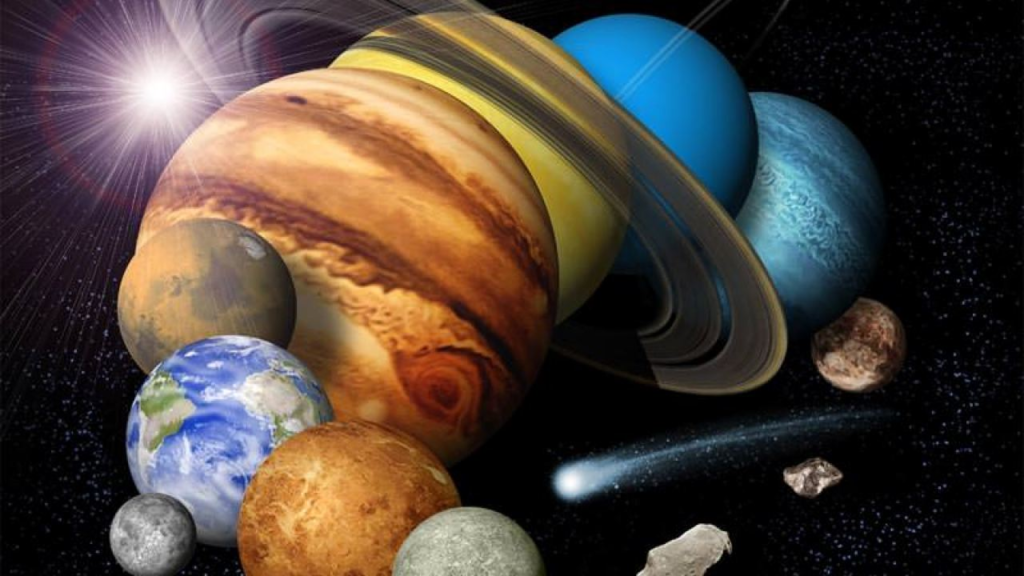Some Facts About Planets
key notes :
Definition of Planets:
- Planets are large celestial bodies that orbit a star, such as the Sun in our solar system.
- They are spherical in shape and do not emit their own light.
The Solar System:

- There are eight planets in the solar system: Mercury, Venus, Earth, Mars, Jupiter, Saturn, Uranus, and Neptune.
- These planets orbit the Sun, which is the center of the solar system.
Inner and Outer Planets:
- Inner Planets: Mercury, Venus, Earth, and Mars. They are closer to the Sun and are rocky.

- Outer Planets: Jupiter, Saturn, Uranus, and Neptune. They are farther from the Sun and mostly made of gas and ice.

Special Features of Each Planet:

- Mercury: Smallest planet and closest to the Sun. It has no atmosphere.
- Venus: Hottest planet due to its thick atmosphere trapping heat. It is called Earth’s “sister planet.”
- Earth: The only planet known to support life, with water and oxygen.
- Mars: Known as the “Red Planet” because of its reddish soil. It has the largest volcano in the solar system, Olympus Mons.
- Jupiter: The largest planet, with a giant storm called the Great Red Spot.
- Saturn: Famous for its beautiful rings made of ice and rock.
- Uranus: Spins on its side and appears bluish-green due to methane gas.
- Neptune: The windiest planet, also bluish in color due to methane.
Planet Sizes and Distances:

- Planets vary greatly in size and distance from the Sun.
- Jupiter is the largest, while Mercury is the smallest.
- The farther a planet is from the Sun, the longer its orbit and year.
Dwarf Planets:

- Pluto was once considered the ninth planet but is now classified as a dwarf planet.
- Dwarf planets are smaller than regular planets and share their orbits with other objects.
Fun Facts:
- Days and years differ on each planet. For example, a day on Venus is longer than its year!
- Saturn has the most moons, including Titan, which is larger than Mercury.
Importance of Studying Planets:
- Helps us understand Earth’s place in the universe.
- Gives clues about the possibility of life elsewhere in the universe.
Let’s practice!

